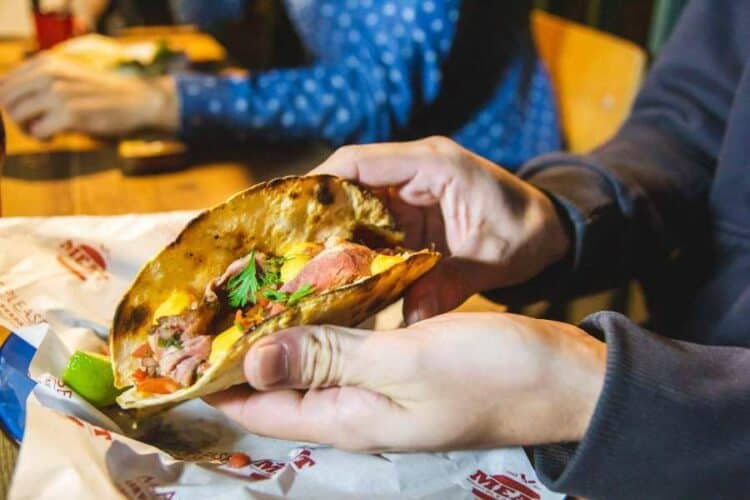Meals-Ready-To-Eat, otherwise known as MREs, are common among hikers, mountaineers, hunters, campers, backpackers, and deployed military personnel. As you can see, all these activities require prolonged periods away from cooking facilities. You will find these Meals Ready-to-Eat packed in waterproof, vacuum-sealed bags or Mylar Bags.
Why are civilians choosing to use Meals Ready-to-Eat instead of carrying packed food? The characteristics of MREs (flexible, light, have a long shelf life, and require little or no heating) make them suitable for lengthy outdoor expeditions. It is interesting to note, according to Sial, that during and after the COVID-19 pandemic, the interest in meals-ready-to-eat by the public consumers remains high.

Image Source: pexels.com
During the emergency lockdowns, consumers bought Meals Ready-to-Eat, contributing to their increase in sales. Is the rush for the purchase of emergency foodstuff decreasing? According to the New York Times, shoppers are still purchasing meals ready to eat to prepare for future unexpected emergencies or natural disasters.
Initially, MREs given to active military personnel, law enforcement officers, and astronauts were unappetizing but had the nutritional contents to keep them healthy. They were tasteless, chewy, and not appealing meals. Today, researchers and scientists use developed ways to make these meals tasty, have a longer shelf life, and appealing for consumption. Depending on the seller’s brand, the packages will most likely contain the following items.
- Main dish
- Starch such as crackers, tortillas, or bread
- Spread such as jam, peanut butter, or margarine
- Desserts such as M&M, chocolate bars, energy bars, cakes, brownies, or cookies
- Energy-giving beverage powder such as electrodes, coffee, lemon drinks, or cocoa
- Seasonings
- Salt, sugar, pepper, and creamer packets.
- A flame-less ration heater that warms the MRE or beverages within 10 mins.
- Cutlery such as disposable spoons, forks, and knives.
- Tissue
- Serviette
Different brands offer a variety of meals-ready-to-eat, as currently, many civilians venture into purchasing them. Therefore, which MREs taste the best and how long do they last?
Best Tasting MREs
Similar to any other meal, taste differs from person to person. Some like spicy food, while others don’t. We have meat lovers and others who are vegetarians. Therefore, considering this, this article serves as a friendly guide from experiences of what others find tasty and appealing to their taste buds. Also, you can click here for more information on MREs.
Cheese Tortellini in Tomato Sauce
The Cheese Tortellini meal contains Tomato Sauce, tortellini, ricotta, Parmesan cheese, and seasonings such as basil and oregano. Its flavor leans towards having an Italian-tasting meal. According to MyFitnessPal, a 227 g packet of this meal contains approximately 260 calories, 7 g fat, 13 g protein, and 40 g carbs.
Taste: The tomato sauce tastes like sugary tomato paste and is sticky. When heated the tortellini does not fall apart, which is a plus for this meal. Many people recommend this meal as one of the better-tasting and flavorful MREs.
Shelf Life: Store Cheese Tortellini meal in a cool temperature space and can last up to 10 years. In tropical climates (like desert climates), where cool storage is difficult to find, it can take 2 to 3 months before it goes bad.
Beef Chili with Beans
The Beef Chili with Beans MRE comprises shredded beef in chili sauce, black beans, pepper, jalapeno topped off with tortillas, cornbread, or crackers, and a cheese spread. One packet of 227 g of Beef Chili with Beans MRE contains 260 calories, 14 g of fat, 16 g of proteins, and 35 g of carbs.
Taste: The chili sauce is not overly hot and has a nice spicy flavor. The cheese spread has a strong tangy taste that balances out with the sweet taste of the chili. It is a favorite of many people and great for added energy because 42% of this meal is carbs, which replenish what you have burned during your outdoor activity.
Shelf Life: Depending on the brand you buy, some packages state it has a shelf life of up to 15 years. How long this meal will last depends on how you store it and at what temperatures.
Mexican Beef Taco

Image Source: pexels.com
This Beef Taco meal has ground beef sauce, crackers, or tortillas, mango peach applesauce, peanut spread, seasoning, and barbecue sauce. This meal contains approximately 290 calories, 14 g fat, 19 g protein, and 18 g carbs.
Taste: The ground beef sauces taste bland and you might need to add salt and hot sauce to add some taste to it. The tortillas are flexible enough to roll in the beef sauce.
Shelf Life: It has a shelf life of up to 5 years depending on its storage.
Lentils in Masala Sauce
The MRE packet for Lentils in Masala Sauce contains lentils, carrots, onion, bell peppers in sauce with masala seasoning, Naan bread, a trailer mix of peanuts, pretzels, and raisins, oatmeal cookies, and chocolate pudding. It aims to achieve the Indian meal flavors with all the nutrients you need.
Taste: It has an Indian curry, masala kind of flavor and is not bland. It has some taste of cinnamon, turmeric, and cumin and has some elements of spice but is not spicy or hot. If you like heat, you can add in some hot sauce, which is not part of the packaging. Remember to bring some hot sauce with you.
Shelf Life: This meal can last for over five years.
Chili and Macaroni
Chili and Macaroni MRE pack contains elbow macaroni in thick tomato sauce, seasoning, cheese Jalapeno spread, crackers, and dessert. The 227 g Chili and Macaroni meal contains about 380 calories,7 g fat, 17 g protein, and 28 g carbs.
Taste: A thick beef chili sauce covers the chewy macaroni, tastes great as it gives off the flavor of beef and a buzz of the red pepper. The Jalapeno spread on the cracker tastes amazing. A poll conducted by Amazon shows many people prefer this meal to other military MREs.
Shelf Life: It can last for up to five years.
Chicken and Rice
The Chicken and Rice MRE packet contain fried white rice with pieces of chicken in chicken stock, crackers, peanut butter spread, a desert, and seasonings. A 227 g Chicken and Rice pouch provides about 250 calories, 8 g fat, 18 g protein, and 31 g carbs.
Taste: This meal tastes and smells great, with the chicken tasting like chicken and not giving off a tough plastic taste. You might need to add in some salt and the provided hot sauce for that extra notch of flavor.
Self Life: The Chicken and Rice MRE’s best shelf life is 5 years. However, it can last for over 15 years, depending on it being stored in a cool environment.
Conclusion
Originally, food scientists designed MREs for soldiers in battle who needed daily food nutrients for the day and the flexibility of eating them cold or heat when on the battlefield. The flavor was not a priority, and most of the meals were bland. Their purpose was to keep the soldiers from starvation. The calories stated in this article pertain to the main dish of the MREs. Combining the main dish calories with the accompanying dessert and beverages calories, each Meals Ready-to-Eat package provides approximately 1250 calories, 184 g carbs, 43.3 g fat, and 34 g protein, enough for the requirement of nutrients the body needs per meal.
We need to appreciate Researchers and Scientists for the part they play in coming up with flavor-filled meals ready to eat that are more palatable to the tongue and for prolonging the life of these meals. Case in point, researchers through experiments have found ways to keep chocolate bars from melting even at very high temperatures. As public consumers and military personnel consume Meals Ready-to-Eat, more scientists explore the need to add flavor and freshness to the Meals Ready-to-Eat packets.
Most MREs, if stored in a cool environment, will last up to 5 to 10 years, while some, especially freeze-dried meals, can last for up to 25 years. However, as years fly by, their freshness declines but still conserves its edibility. When stored in a desert-like temperature of around 380 C or 1000 F, these MREs last 3 to 6 months.
Which are your Best Tasting MREs, try to share them in the comment box.




